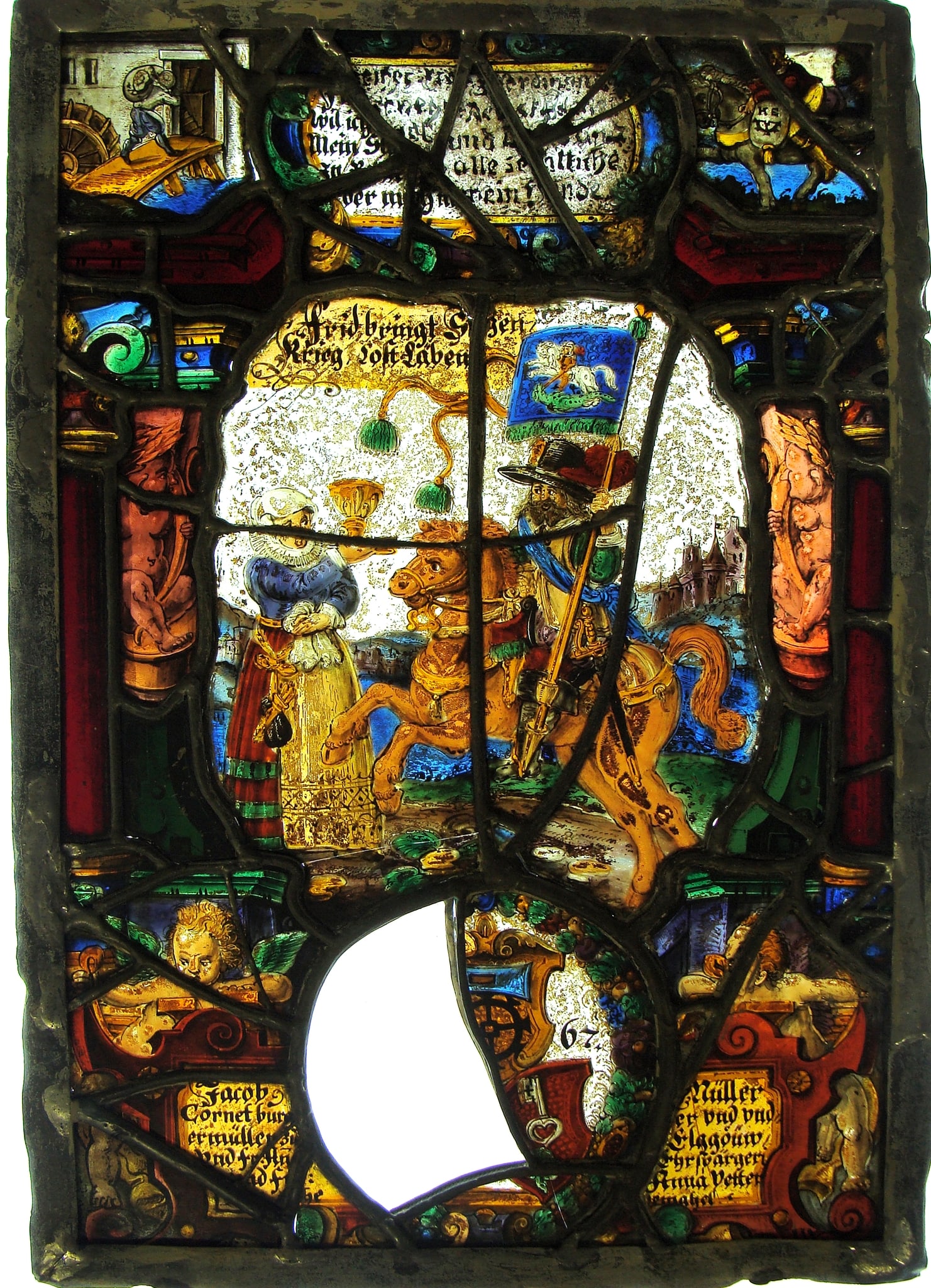An architectural frame of red columns, green capitals, and pink caryatids on green bases encloses the central scene. An inscription plate appears above. In the upper left-hand corner, a miller carries grain to a mill. On the right, a miller rides on horseback with a bag of grain or flour across the saddle. The central scene shows a woman on the left who holds an elaborate stemmed cup in her upraised right arm. On her right, a rider on a prancing horse holds a banner. In the green background is a blue lake, while in the distance there is a town in purple. Below; two putti flank an elaborate inscription cartouche at whose center is a coat of arms surrounded by a wreath.
42D3 · marriage, married couple, 'matrimonium'
46A122(EHRENSPERGER) · armorial bearing, heraldry (EHRENSPERGER)
46A122(MULLER) · armorial bearing, heraldry (MULLER)
46A122(VETTER) · armorial bearing, heraldry (VETTER)
46C131 · riding a horse, ass, or mule; rider, horseman
46C13141 · horse
47C37 · grinding, milling (industrial processes)
92D1916 · cupids: 'amores', 'amoretti', 'putti'
Unidentified: Above right, on the grain sack on the horse: a demi mill iron sable surmounted by the letters H E sable.
Arms of Müller (in cartouche, upper shield): or in base a mill iron sable and a chief azure
Unidentified; presumably arms ofVetter (below, right): gules a key argent in base a leaf slipped vert.
To the left would have been the arms of Ehrensperger, Müller 's first wife.
F [ . . . ]/wil ich[ . . . ]/ Mein G[ . . . ]/ In R[ . . . ]/ der m[ . ]g m[ . . . ] (in upper cartouche: fragments to the left; the rest is restoration)
Frid bringt S[ . ]gen/ Krieg cost Läben (in scene; peace brings blessing; war costs lives)
Jacob Müller /Cornet burger vnd vnd / ermüller zu Elggoüw vnd Fr. Anna Ehrspärgeri und Fr. Anna Vetter [ . ]/hegemahel (on lower band; Jacob Müller, Standard Bearer, citizen and lower miller (indicating the location of the mill) of Elgg and Frau Anna Ehrensperger and Frau Anna Vetter, his wedded wives
[. . .]67 (beside Müller shield, 1667)
H E (on grain sack, with demi mill wheel)
none
